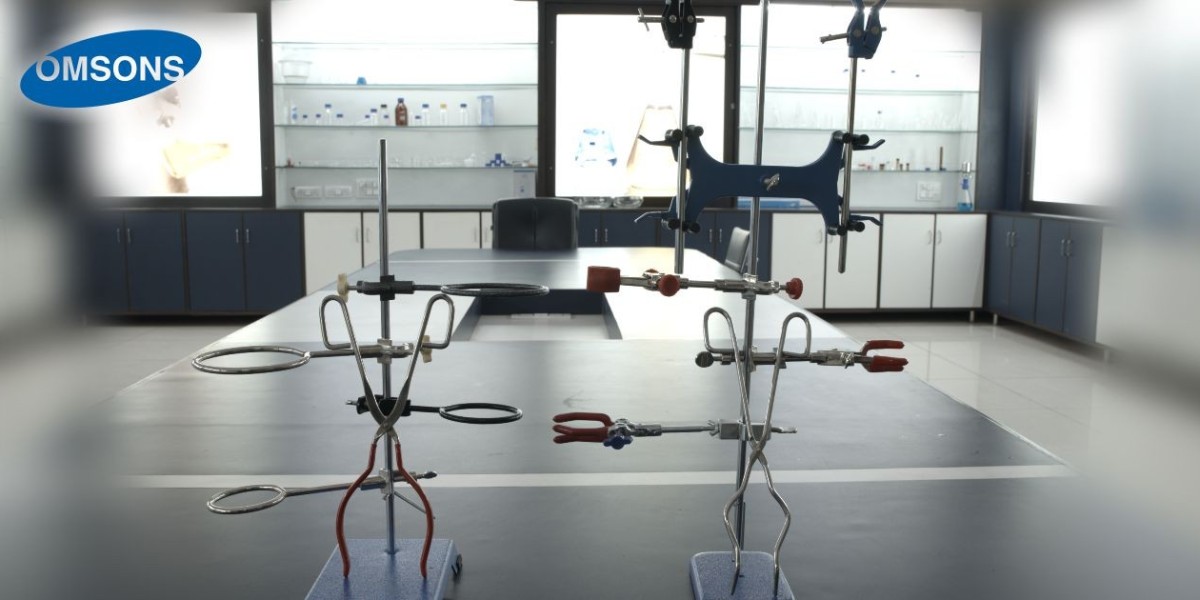Behind every successful scientific experiment, there lies a range of essential tools known as lab metalware. From robust clamps and supports to precise crucibles and spatulas, these metallic instruments provide the necessary stability, durability, and versatility required for a wide range of laboratory applications. In this article, we delve into the world of laboratory metalware , exploring its various types, functions, and indispensable role in scientific research and experimentation.
The Importance of Lab Metalware:
Lab metalware serves as the backbone of scientific experimentation, offering crucial support and functionality in a laboratory setting. It provides researchers with sturdy platforms for conducting experiments, holding apparatus securely in place, and facilitating precise measurements and manipulations. The significance of lab metalware can be observed across different scientific disciplines, including chemistry, biology, physics, and engineering.
Types and Functions of Lab Metalware:
1. Clamps and Supports:
Clamps and supports are essential metalware components used to secure apparatus, glassware, and other equipment in a laboratory setup. They are designed to provide stability and prevent accidental spills or breakages during experiments. Different types of clamps and supports include:
- Three-finger clamps: These clamps have three adjustable jaws and are commonly used to hold round objects such as burettes or stirring rods.
- Utility clamps: Utility clamps have a wide, adjustable opening and are suitable for securing larger objects, such as flasks or condensers, to a retort stand or support rod.
- Retort stands: Retort stands consist of a sturdy metal base, a vertical support rod, and various attachments for holding clamps and supporting apparatus.
2. Crucibles and Tongs:
Crucibles are small, heat-resistant vessels made of materials like porcelain, alumina, or nickel-chromium alloys. They are used for heating substances at high temperatures, performing chemical reactions, or melting samples. Crucible tongs, which are long-handled metal tongs with heat-resistant coatings, are used to handle hot crucibles safely.
3. Spatulas and Scoops:
Spatulas and scoops are versatile metal tools used for measuring, transferring, and manipulating substances in a laboratory. They come in various sizes and shapes, including flat, tapered, and micro-spatulas. Spatulas are commonly used for weighing solid substances, while scoops are useful for transferring powders or granules.
4. Forceps and Tweezers:
Forceps and tweezers are precision metal tools used for handling delicate samples, small components, or biological specimens. They have fine, pointed tips that allow for precise gripping and manipulation.
5. Stirring Rods:
Stirring rods are long, slender metal or glass rods used for mixing, stirring, or agitating solutions or suspensions. They come in different lengths and can have rounded or flattened ends for different applications.
6. Bunsen Burners and Heating Elements:
Bunsen burners are commonly used in laboratories for heating substances, sterilizing equipment, or conducting flame tests. These gas burners produce a hot, clean flame that can be adjusted to different heights and intensities. In addition to Bunsen burners, there are various electric heating elements available for specific heating requirements.
7. Wire Gauze and Tripods:
Wire gauze is a mesh screen supported by a metal ring, typically used on a tripod stand to distribute heat evenly and protect glassware from direct flame contact. Tripods consist of three metal legs that provide stability and support for various heating processes.
Quality and Safety Considerations:
The quality and safety of lab metalware are of utmost importance. Manufacturers ensure that these instruments are made from high-quality materials, such as stainless steel, aluminum, or nickel-chromium alloys, to withstand harsh chemical environments and high-temperature applications. Rigorous quality control measures are implemented to maintain dimensional accuracy, durability, and resistance to corrosion.
Proper maintenance and regular inspection of lab metalware are essential to ensure safe and accurate results. It is crucial to monitor for signs of wear and tear, corrosion, or damage that could compromise the integrity of the instruments. Regular cleaning and sterilization procedures should be followed to prevent contamination and maintain the hygiene standards of the laboratory.
Conclusion:
Lab metalware forms an integral part of every laboratory, providing the necessary support, stability, and functionality required for scientific experimentation and research. From clamps and supports to crucibles and spatulas, each instrument plays a specific role in facilitating accurate measurements, controlled reactions, and safe handling of substances. The quality, durability, and safety of lab metalware are paramount to ensure reliable and reproducible results. As scientific exploration continues to advance, the continued development and refinement of lab metalware will contribute to the progress of various fields, driving innovation and discovery.








